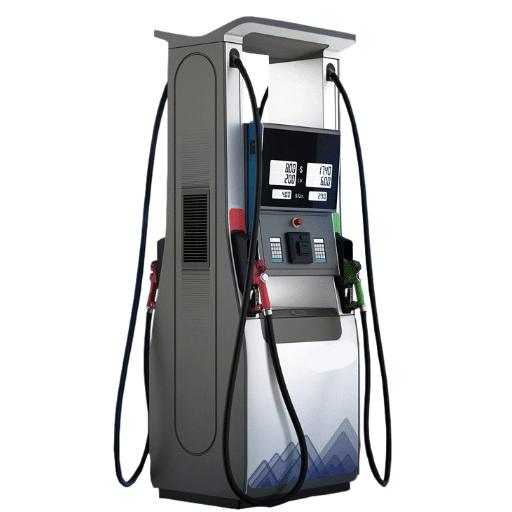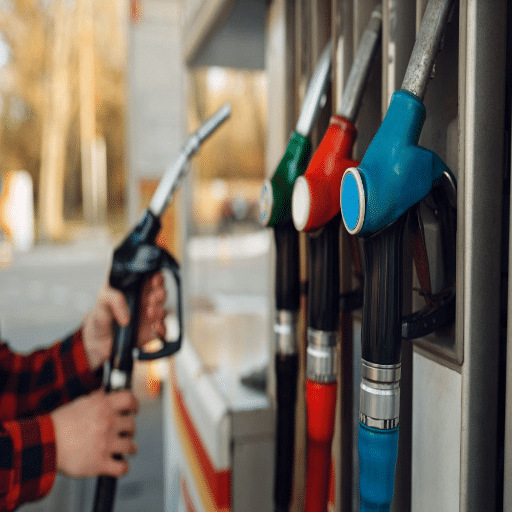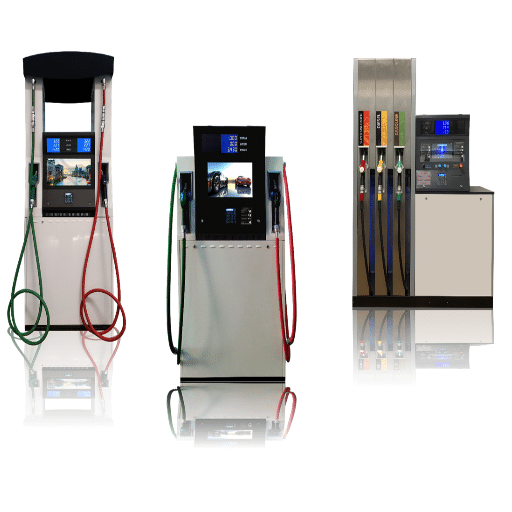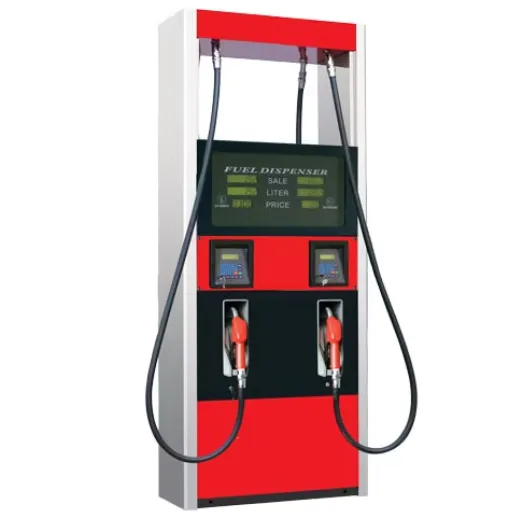A building lot that used to host a gas station is a challenging, yet rewarding, opportunity. Being in the ideal location for development, developers must also familiarize themselves with the different challenges of such a site. Environmental issues, zoning regulations, remediations–there is much more to consider before the ground is broken. This article looks into the most essential items so that you are armed with information to make a good decision to ensure a safe and well-executed project. Whether you are a developer, a property buyer, or just someone curious about the whole process, you will find some of the most essential information on taking a former gas station site to your next significant development venture in this guide.
Understanding Former Gas Station Sites

There are several things to evaluate before other types of redevelopment of former gasoline station sites, also called brownfields. For instance, they tend to have underground storage tanks, and the leakage of fuel or chemicals could contaminate the soil or groundwater. First, an environmental investigation should be carried out in detail to identify contamination. The remediation might include removing tanks, treating contaminated areas, etc., and classifying under environmental regulations enforced at local and federal levels. An ecological professional must do a thorough check, and all requirements from a legal perspective must be met to guarantee safety for the proposed use of the site.
What Defines a Former Gas Station?
Former gas stations are usually referred to as places that were once considered facilities for storing and dispensing fuel, often for the benefit of vehicles. These installations had underground storage tanks (USTs) for keeping gasoline, diesel, or other petroleum products. Many of these stations were shut down because their classical infrastructure did not meet today’s standards, profit-making was declining, or the cities simply changed. Industry estimates state hundreds of thousands of unwanted, or former, gas station sites in the United States, several of which are classified as brownfields due to the risk of contamination.
Their defining feature is the possibility of contamination. Some of the common pollutants include petroleum hydrocarbons, volatile organic compounds (VOCs), and heavy metals that might have seeped from tanks or piping into nearby soil or groundwater. Studies show that more than 50% of the UST systems in older sites started leaking before environmental regulations and advanced tank systems became widely accepted in Science. Today, almost all ex-gas station sites are appraised and remediated for ecological standards before being converted into residential, commercial, or public use.
Modern redevelopment protocols focus on environment-based issues in tandem with urban planning objectives, enabling the transformation of these sites into safe and functional environments.
Common Issues with Gas Station Sites
Gas station sites have generally been problematic from an environmental point of view due to their history of petroleum storage and handling. The most frequent site contamination scenario involves soil and groundwater contamination by leaky underground storage tanks (USTs). According to the EPA, there are more than 500,000 confirmed cases of releases from UST systems in the United States, with cleanup costs running into tens of thousands of dollars depending on the magnitude of the contamination.
The next complication is vapor intrusion, which involves volatile organic compounds (VOCs) from contaminated soils or waters migrating into buildings adjacent to and posing health risks to the residents or workers within the redevelopment areas. The site could also contain abandoned infrastructure, such as old tanks, fuel lines, or dispensers, that must be correctly removed and disposed of in an environmentally acceptable manner.
Beyond environmental aspects, integrating these sites into urban development can be very complicated. Zoning restrictions, community health concerns, and remediation requirements affect redevelopment timelines and costs. Successful redevelopment projects require a conjoint effort of developers and regulatory agencies working from a perspective informed by a thorough environmental assessment.
Environmental Concerns and Regulations
Environmental considerations kick in when site redevelopment is on the agenda, especially when contamination or brownfields come into the picture. According to statistics, the US alone is home to more than 450,000 brownfields that might present a cleanup scenario before reuse. The cleanup usually refers to steps aimed at eradicating the source of contamination, which could be pollution or control of its present load, wherein the standards dictate that soil and groundwater quality must be acceptable.
These are heavily legislated environmental efforts. For instance, the Clean-up Environmental Response, Compensation and Liability Act (CERCLA) or Superfund works to set up a mechanism where contaminated sites or cleanups can be dealt with or cleaning can be undertaken in sets, donning heavy administrative and financial burdens. There must be programs at the state level to complement these federal regulations in addressing local concerns of communities.
With the advancement of technology, environmental monitoring and assessment are proactive, and tools like GIS (Geographic Information Systems) aid in identifying contaminated sites. Investment in remediation also enhances ecological conditions and serves economic revitalization, where a redeveloped site will often increase the values of the properties in its vicinity and attract new businesses. Sustainable practices and regulatory compliance provide a balanced framework to protect community and environmental health during redevelopment.
Old Gas Station Building Regulations and Requirements
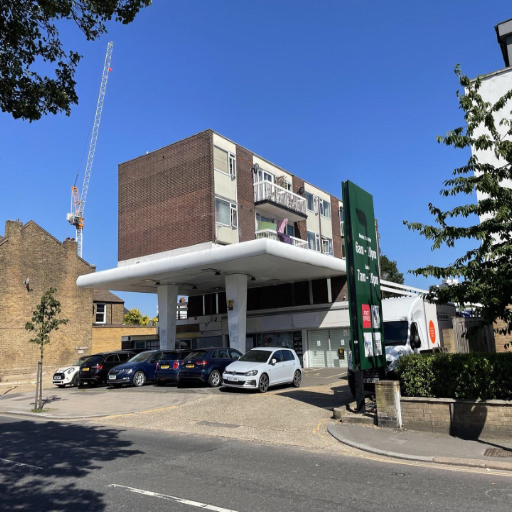
Environmental Assessment: Preferably, conduct a Phase I ESA to identify contamination risks due to the property. Phase II may be required if contamination is suspected.
Tank Removal and Testing: USTs must be properly removed or decommissioned in strict conformance with state and federal laws. Soil testing must be conducted to determine if the tanks leaked.
Permits & Compliance: Where necessary, obtain building permits for all work, and comply with local zoning and environmental statutes, including EPA rules.
Cleanup Standards: Ensure site safety within remediation cleanup standards for any detected contamination and, if necessary, within local and federal cleanup standards for soil or groundwater.
Future Use Alignment: In planning for redevelopment, ensure zoning and land-use conformity, taking into account any restrictions imposed by preexisting industrial activities.
Zoning Laws and Building Codes
Zoning laws and building codes significantly influence urban development, with zoning laws ensuring orderly land use for the public good and keeping land within a land-use category, such as residential or commercial. These laws may condemn the building height or density and establish other requirements to maintain neighborhood character and function. In the United States, mixed-use zoning is gaining ground, enabling a residential life to precede or intermingle with commercial life, thus bathing communities in walkability.
On the contrary, building codes determine how things are constructed while setting standards to ensure safety, energy conservation, and sustainability. Tremendous emphasis on green building has been part of building codes in recent updates. Consider these provisions of the International Energy Conservation Code (IECC) that impose higher insulation standards and energy-efficient HVAC systems, for example. Adopting this code has resulted in substantial energy savings, with studies showing up to 30% energy efficiency for buildings by these new codes compared with older building codes.
Local governments, therefore, enact zoning and building codes to protect property values, reduce environmental impacts, and foster safer and better-organized communities. A complete understanding of, and working by, these codes is imperative to any development activity.
Permitting Process for Redeveloping a Gas Station Site
Redeveloping a gas station site involves navigating a detailed permitting process best to meet environmental, zoning, and safety requirements. Typically, the first step consists of conducting an environmental site assessment (ESA) to uncover any potential contamination from underground storage tanks (USTs) or other operations related to petroleum activities. Phase I ESAs review the property’s historic use, whereas a Phase II ESA may be required for soil and groundwater testing if contamination is suspected.
Once contamination is confirmed, local and federal environmental laws and standards require the preparation and implementation of remediation plans. The Environmental Protection Agency (EPA) and state agencies supervise most clean-ups to ensure the safe removal of wastes and hazardous agents.
After addressing the environmental problems, agreeing upon zoning and land-use requirements is next. To ensure compliance with zoning codes and future land-use plans, an application might be submitted to local planning departments concerning the redevelopment. However, should rezoning be registered, this application process may involve hearings and grassroots participation.
In addition, building permits, stormwater permits, and permits for water and sanitary connections shall be obtained. In this phase, documents for the traffic impact study, the drainage plan, and the fire protection might be called for. As recent case study developments reveal, permit approval for gas station redevelopment projects can last six months to a year or more, depending on the nature of the site and the complexity of regulatory requirements.
Public interaction also holds great value. Discussing the same with adjoining landowners and local government brings solutions to concerns and support for the proposed project. With complete disclosure between developers and strict adherence to governing regulations, there is no stopping developers from transforming an obsolete gas station into a vibrant, sustainable space from which the community can benefit.
Assessing Soil and Site Contamination
Assessing contamination in soil and site is a critical first step in repurposing a former gas station or other compromised properties. Commonly, it starts with a Phase I Environmental Site Assessment (ESA), where historical land use is studied, and site inspections with several practices looking for potential sources of environmental concern are carried out. If a Phase I ESA ends with a suspicion of contamination, then a Phase II ESA will be implemented, and samples of soil, groundwater, and sometimes air are tested for certain target pollutants, often petroleum hydrocarbons, heavy metals, and volatile organic compounds (VOCs).
Because benzene is one of the contaminants often associated with petroleum products and is a highly potent health threat when it exceeds permissible limits, it presents a greater concern. For instance, the U.S. Environmental Protection Agency (EPA) has established 0.005 mg/L as the maximum contaminant level for benzene concentrations in drinking water. Among the contaminants detected are the hydrocarbons, with total petroleum hydrocarbons (TPH) being commonly noted and then tested and assessed for qualitative and quantitative measurements to determine actual concentrations and environmental impact.
Analytical tools such as gas chromatography and site characterization can help to understand contamination distribution patterns and develop cleanup methods precisely. GIS mapping is also commonly used to evaluate the relationship between subsurface contaminant plumes and sensitive receptors such as water supplies.
Prudent communication with environmental agencies is essential at this stage of assessments. The regulatory thresholds may be different from one region to another. At the same time, contamination remediation may be pretty specific, using methods such as bioremediation, soil vapor extraction, or excavation and backfilling of affected soil.
By conducting a few complementary investigations, using modern technology, and adhering to accepted regulatory standards, contamination assessment can thus provide a springboard for clean redevelopment, with environmental safety assured for future land use.
Potential Uses for a Vacant Gas Station Lot
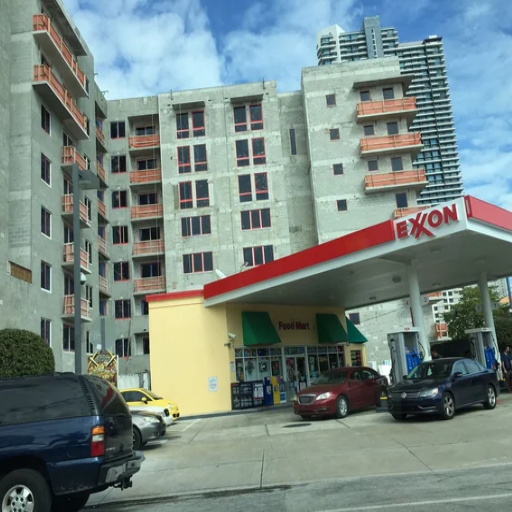
Vacant gas station lots are full of possibilities offered for redevelopment based on location, size, and community needs. The lot can be a small retail space, a coffee shop, or a convenience store, with the emphasis on supporting local businesses. It can also be a community hub, such as a public park, farmer’s market, or simply a green space that beautifies the neighborhood and serves as an area for socializing. For urban settings, it seems appropriate to convert the spot into electric vehicle charging stations or car-sharing hubs, considering the increasing demand for sustainable transportation infrastructure. Moreover, mixed-use developments combining residential and commercial spaces could make the best use of the land while simultaneously aiding in alleviating the housing shortage.
Commercial Opportunities and Development Ideas
Innovative projects that cater to community necessities and market trends have the potential to unlock value in underutilized spaces. Conversion of the spaces of opportunity into destinations like co-working spaces or boutique retail centers serves the increasing demand for flexible workspaces and niche shopping experiences. Other lucrative opportunities exist for urban agricultural ventures that may foster sustainable practices and aid food access, such as rooftop farming and community gardening. Another investment opportunity on the cutting edge is the installation of renewable energy sources such as solar farms or wind turbines, tying the international agenda of sustainability with investors who are conscious about the environment. Finally, mixed-use developments (retail, office, and residential) provide an excellent way to leverage land use efficiency while building fruitful multifunctional environments. Each method represents an economic potential and simultaneously fosters the growth of communities in the region.
Community Impact of Redeveloping a Former Gas Station
The redevelopment of a former gas station site holds the potential to profoundly affect a community, transforming a possibility for contamination and neglect into a shining beacon of activity and welfare for its people. Environmental remediation is among the main merits of the redevelopment.
Fuel storage and leaks have often contaminated soil and groundwater for many years. An effort is made to clean up such contamination, thereby lowering health risks to the public while raising environmental standards. Using examples further clarifies the point: According to the United States Environmental Protection Agency (EPA), the cleanup and redevelopment of thousands of brownfields, including former gas stations, have helped neighborhoods regain vitality and shed serious environmental concerns.
Besides environmental issues, redevelopment gives way to economic growth. Former gas stations are turned into mixed-use spaces, affordable housing, or small businesses, attracting new investments and jobs. Research shows that the redevelopment of underutilized sites has induced a 5 to 15 percent appreciation in values of adjacent properties, raising tax revenues that go into local infrastructure or services.
Perhaps the most significant social impact is fostering community involvement. Transforming worn-out gas facilities into a park, a community center, or a green energy hub (an electric vehicle charging station) promotes community interaction. It establishes a sense of pride among its members. Also, these redesign projects often include sustainable design elements such as green roofs or renewable energy installations that contribute to fighting climate change and embody a heritage of long-term environmental stewardship. With an emphasis on cleanup and redevelopment for the communities, these former gas station sites become an incredible testimony to rebirth and progress within their neighborhood.
Case Studies of Successful Redevelopments
Gas Station to Urban Park in Seattle, Washington: One example showcases the successful conversion of a former gas station into an active urban park. The site in a residential neighborhood was decontaminated and redesigned as a green space with walking paths, native plants, and seating arrangements. Extensive soil remediation was done to remove chemicals that had seeped into the soil over decades of fuel storage. Biodiversity is being enhanced in the area where this park is located, and it serves as a place for community interaction. Local reports indicate that property values around the region have since increased approximately 15%, highlighting the economic value of such projects.
The Green Energy Hub of Toronto: Smaller yet significant brownfield projects that contribute much to sustainability are being fostered in Toronto. The site was cleaned thoroughly of soil and groundwater contamination and is now equipped with solar panels and wind turbines that produce green power for nearby buildings. It is one of the measures undertaken by the city aiming for carbon neutrality by 2050. The green energy hub produces enough electric power to run almost 1,000 homes yearly. It is a shining inspiration for how brownfield sites could contribute to sustainability and clean energy interests.
Community Center, Austin, Texas: An abandoned gas station in Austin was fully redeveloped into a bustling community center that offers many activities, including art workshops, fitness classes, and public events. These clean-up activities included dismantling underground storage tanks and air and soil remediation. The final building also employs energy-efficient designs while harvesting rainwater for some of its water needs. Over 3,000 people visit the community center monthly, stimulating the development of small businesses around the area and further rejuvenating the neighborhood.
Generate environmental, economic, and social viability through greater examples of potential activities through former gas station sites. When planning and financial preparation are executed down to earth, they are reintegrated positively within the city’s framework, endorsing sustainability and advancing long-term interests beyond valuation.
Buying a Former Gas Station Lot
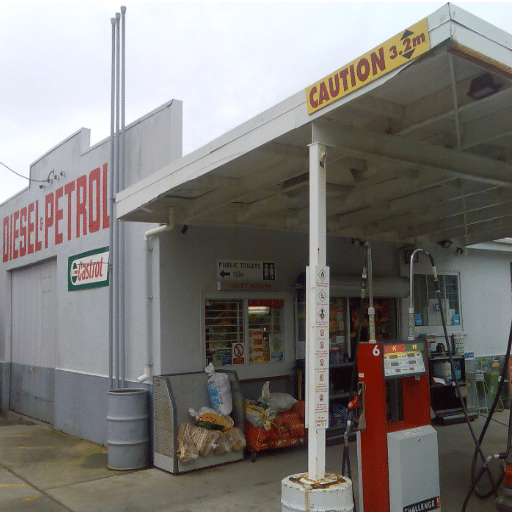
Particular concerns must be addressed when buying a former gas station lot. First and foremost, a complete environmental assessment should be made to detect any possible contamination by underground tanks or from mere leakage of the fuel stored there. This is essential in determining the level of remediation that might be required. Secondly, check zoning requirements and local ordinances to ascertain that the lot can be re-zoned or suited for your intended use. Third, consider redevelopment costs, including environmental cleaning fees, construction costs, and permitting. Lastly, talk to your allied industry professionals, environmental engineers, and attorneys to establish risk factors and develop a total property acquisition and redevelopment plan.
Finding Available Properties
Utilizing online real estate platforms when searching for available properties can be a good initial approach. Websites like Zillow, Realtor.com, and LoopNet host slurry listings, filterable by location, property type, and price range. Crexi or CoStar would be preferred resources for more in-depth market analyses for commercial venues. Government and municipal websites can often have listings for surplus properties, foreclosures, or public auctions, adding to the potential opportunities for purchase.
Another suitable method for locating off-market properties is through networking opportunities. Building working relationships with local agents, brokers, or developers may provide listings that are not widely publicized. Networking during party events and trade shows could also keep you aligned with those who know about upcoming property opportunities.
Industry reports have shown an increased demand for industrial and mixed-use developments. For example, studies conducted in recent markets demonstrate a pivot towards conversions of vacant lots in urban places to produce affordable housing or retail. This exemplifies how important locality and current zoning lines are in property evaluation. Thus, the use of digital aids together with professional-level connections can fetch the buyer a vast cross-section of options keyed to their investment objectives.
Financing Options for Gas Station Site Purchases
There are several avenues to choose from when financing a gas station site. The conventional route would be to approach a bank for a loan requiring strong creditworthiness, down-payment ranging from 10-30%, and hefty paperwork to prove that the lender has scored a good deal. SBA Loans, such as those under SBA 7(a) or 504 forms, are top choices that promise low-interest rates for an extended period, often chosen by first-time purchasers or small business operators. Private or commercial real estate financing banks can also be extraordinary alternate routes, granting wider flexibility and swifter approval procedures, chiefly for applicants without traditional investment profiles.
Before committing, thorough research should be carried out on the projected profitability of the gas station site, as well as an in-depth knowledge of the loan requirements. Talking with an experienced financial consultant or a loan specialist in transactions involving gas station sites can go a long way in helping you decide on the best financing scheme that will complement your aspirations.
Legal Considerations in the Buying Process
When purchasing a gas station, ensuring that all legal considerations are met, one of the most important considerations that needs to be addressed is facilitating a smooth transaction and stimulating business operations for the long term. Under this umbrella, thorough due diligence considerations should be completed to establish ownership, verify the absence of liens or other potential legal disputes encumbering the property, and check for non-compliance with local zoning ordinances. Lapses here can set one into unforeseen pitfalls of legal conflicts or liabilities.
Environmentally-related acts constitute one of the most relevant aspects impinging on such deals. Underground fuel tanks require buyers to carry out at least a Phase I Environmental Site Assessment and in some cases a Phase II assessment to check for contamination or environmental hazards. Assuming industry averages can be taken, a contamination site remediation can run anywhere from $10,000 to more than $1,000,000 based on the seriousness of the issue. Lastly, assuring adherence to all environmental standards and taking appropriate insurance against liabilities is of utmost importance.
Moreover, the purchaser should review all licensing and permit requirements for a gas station operation. Numerous subsequent permits exist for operations, including but not limited to fuel storage permits, business licenses, and possibly permits to sell alcohol and tobacco when/if applicable. To ensure uninterrupted operations post-purchase, ensure these permits are current and transferable.
Lastly, understanding current franchise or supplier agreements is particularly important if a gas station is affiliated with a large brand. Such contracts may contain provisions regarding fuel pricing, brand image requirements, and marketing obligations, all of which could impact profitability. A consultation with a real estate attorney specializing in gas station acquisitions would eliminate many of these legal considerations while protecting your investment.
The Future of Former Gas Station Sites
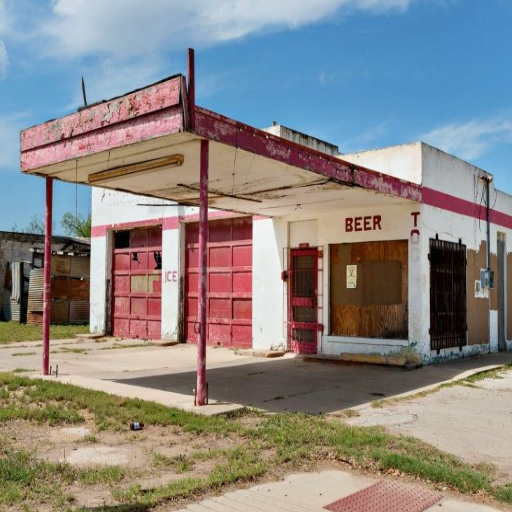
Former gas station sites offer excellent redevelopment opportunities, but their future utilization often depends on environmental remediation and zoning regulations. If the site has polluted soil and groundwater from fuel storage leaks, a cleanup is often mandated before any site repurposing can be done. Once resolved, such properties can be turned into community places, retail constructions, or residential neighborhoods, adding value to the neighborhood. The planning and local regulation requirements for these projects should be weighed carefully to succeed, especially in guaranteeing that they are safe and sustainable.
Trends in Urban Development
I’ve observed that sustainability, innovative technology integration, and mixed-use spaces are evolving trends in urban development. Cities thus adopt ecologically sound infrastructure such as green buildings and renewable energy systems. On the other hand, the smart city movement builds on concepts of efficiency through management by data and values enhancement of urban living throughout its services. Mixed-use developments, which offer a combination of residential, commercial, and recreational spaces, are rising to nurture inspiring neighborhoods worthy of walking. Thus, these trends underscore the transformation of building more inclusive and environmentally sound urban socialities when considered together.
Engaging the Community in Redevelopment Efforts
Community engagement is vital for redevelopment projects to succeed. It creates a sense of ownership among residents and keeps developments aligned with local needs. Studies have shown that cities committed to participatory planning models have better project outcomes, and 75% of residents attest to being more satisfied in projects where they had a say in the redevelopment process.
Public forums, workshops, and digital platforms are efficient means of gathering input and maintaining transparency throughout the redevelopment process. For instance, a survey in an urban setting revealed that projects that used digital means to engage residents in their deliberations had 40% greater participation from residents than those relying only on in-person mechanisms. The availability of these tools enables broader voices to be heard, especially those from communities conventionally left behind.
Besides sustaining community-oriented investments, such projects have three significant economic paybacks. Local business establishments and residents engaged in planning respond with a surge in regional economic activity, with small businesses claiming about a 20% revenue increase after project completion. Community involvement reduces resistance to changes, which delays project implementation by up to 30%.
Continuous, interwoven communication with the community ensures that the residents’ identities and priorities are operationally manifested in their urban redevelopment efforts, turning them into more vibrant, equitable, and sustainable cities.
Final Thoughts on Building on Former Gas Station Sites
The redevelopment of old gas station sites poses particular challenges. These sites, often called brownfields, sometimes pose environmental issues like soil contamination through petroleum products or other hazardous materials. Recent information suggests that perhaps over 500,000 brownfield sites exist in the United States, many of which present great untapped potential for redevelopment if approached with the appropriate remediation strategies.
Good management approaches, sometimes involving soil vapor extraction or a combination of remediation techniques such as bioremediation or excavation, leading to the mitigation of environmental exposure, can be considered the key to environmental risk. Improved remediation techniques also contribute significantly to cost reduction and further reduce the remediation process’s secondary impact on the environment. Also, organizations such as the Environmental Protection Agency (EPA) provide grants and funding to support redevelopment and provide communities with resources for restoring these sites into worthy new spaces.
Properly redeveloped former gas station properties benefit the community through enhanced property values, job creation, and underutilized land development. Redevelopment sites have been successfully converted into parks, retail outlets, and housing, albeit for the economic upliftment and good livelihood of the areas concerned. Sustainability and stakeholder engagement bonding processes have provided a ray of hope to reclaim some of these redevelopment projects from being environmental liabilities to lively community centers.
Reference Sources
“Petroleum Filling Stations and Their Impact on the Environment in Nigeria” (2022)
“The Persistence of Use and Adaptive Reuse of Gas Stations: An Example from Western New York”
Frequently Asked Questions (FAQs)
1. Is it safe to build on a former gas station site?
Yes, building on a former gas station site can be safe if proper environmental site assessments and remediation processes are completed. If contaminated soil or groundwater is present, it must be addressed as part of the redevelopment process to ensure safety and compliance with environmental regulations.
2. What remediation steps are necessary before construction?
Common remediation steps include removing underground storage tanks (USTs), testing the soil and groundwater for contamination, and conducting any necessary cleanup or replacement. Environmental authorities must also certify the site as safe for development.
3. Are there specific regulations for building on such a site?
Yes, redevelopment of former gas station properties is typically governed by local, state, or federal environmental regulations. These rules often include strict guidelines for assessing environmental risks and ensuring contamination has been resolved.
4. How long does the remediation process take?
The timeline for remediation varies depending on the extent of contamination and the requirements of governing authorities. It can take several months to a few years to complete the process.
5. Can former gas station sites be used for any type of construction?
Not all types of construction may be appropriate for former gas station sites. For instance, residential buildings may have stricter requirements than commercial or industrial developments. The site’s intended use will influence the remediation and approval processes.

